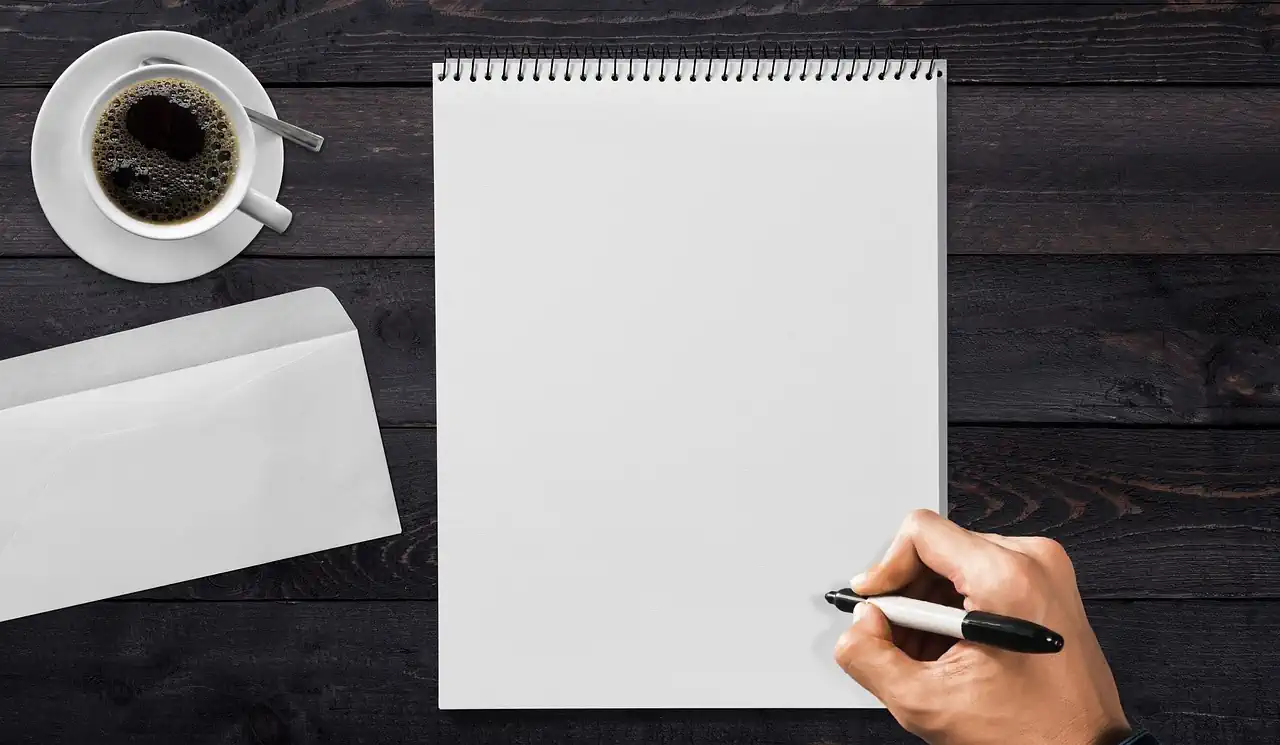How To Save Money With Landscaping
Introduction

Landscaping can be a great way to enhance the beauty of your property, but it can also be expensive. However, there are ways to save money while still achieving a beautiful landscape. In this article, we will discuss some tips on how to save money with landscaping.
Planting Perennials: A Cost-Effective Way to Add Color to Your Landscape
Landscaping is a great way to enhance the beauty of your home and create a welcoming environment for your family and guests. However, it can also be an expensive endeavor, especially if you’re not careful with your budget. Fortunately, there are ways to save money on landscaping without sacrificing the quality of your design. One of the most cost-effective ways to add color to your landscape is by planting perennials.
Perennials are plants that come back year after year, unlike annuals that need to be replanted every season. They are a great investment because they provide long-lasting beauty and require less maintenance than other types of plants. Plus, they can be divided and propagated, which means you can get more plants for free.
When choosing perennials for your landscape, it’s important to consider the climate and soil conditions in your area. Some perennials thrive in full sun, while others prefer shade. Some require well-draining soil, while others can tolerate wet conditions. By selecting plants that are well-suited to your environment, you’ll increase their chances of survival and reduce the need for costly replacements.
Another way to save money with perennials is by selecting plants that bloom at different times throughout the year. This will ensure that your landscape is always in bloom, without the need for constant replanting. For example, you could choose early-blooming perennials like crocuses and daffodils for spring, mid-season bloomers like daylilies and coneflowers for summer, and late-blooming perennials like asters and mums for fall.
When it comes to planting perennials, there are a few things to keep in mind to ensure their success. First, make sure to prepare the soil properly by removing any weeds and adding compost or other organic matter. This will provide the plants with the nutrients they need to thrive. Second, be sure to plant the perennials at the correct depth and spacing, as this will help them establish strong root systems. Finally, water the plants regularly, especially during the first few weeks after planting, to help them get established.
One of the benefits of planting perennials is that they can be divided and propagated, which means you can get more plants for free. This is a great way to expand your garden without spending a lot of money. To divide perennials, simply dig up the plant and separate it into smaller sections, making sure each section has roots and foliage. Then, replant the sections in a new location or share them with friends and family.
In addition to being cost-effective, planting perennials can also have environmental benefits. Perennials require less water and fertilizer than annuals, which can help reduce your water bill and minimize the use of chemicals in your garden. Plus, they provide habitat for pollinators like bees and butterflies, which are essential for a healthy ecosystem.
In conclusion, planting perennials is a great way to add color to your landscape without breaking the bank. By selecting plants that are well-suited to your environment, choosing varieties that bloom at different times throughout the year, and properly preparing the soil and spacing the plants, you can create a beautiful and sustainable garden that will provide enjoyment for years to come.
DIY Mulching: How to Save Money and Improve Your Soil
Landscaping is an essential aspect of any home, but it can be quite expensive. However, there are ways to save money while still achieving a beautiful and functional outdoor space. One of the most effective ways to save money on landscaping is through DIY mulching. Not only does it save you money, but it also improves your soil.
Mulching is the process of covering the soil around plants with a layer of organic material. This material can be anything from leaves, grass clippings, wood chips, or even shredded newspaper. The benefits of mulching are numerous. It helps to retain moisture in the soil, suppresses weed growth, and regulates soil temperature. Additionally, as the organic material breaks down, it adds nutrients to the soil, which improves plant growth.
One of the most significant advantages of DIY mulching is that it is cost-effective. Purchasing mulch from a garden center can be quite expensive, especially if you have a large area to cover. However, by using materials that are readily available in your yard, you can save a significant amount of money. For example, if you have a lawn, you can use grass clippings as mulch. If you have trees, you can use fallen leaves or wood chips.
Another advantage of DIY mulching is that it allows you to control the quality of the material used. When you purchase mulch from a garden center, you have no way of knowing what chemicals or additives were used in its production. However, by using materials from your yard, you can be sure that they are free from harmful chemicals.
To get started with DIY mulching, you first need to decide on the type of material you want to use. As mentioned earlier, there are several options available, including leaves, grass clippings, wood chips, and shredded newspaper. Once you have decided on the material, you need to gather it and prepare it for use.
If you are using leaves or grass clippings, you need to shred them first. This can be done using a lawnmower or a leaf shredder. Shredding the material helps to break it down faster, which means it will add nutrients to the soil more quickly. If you are using wood chips, you need to make sure they are not too large. Large wood chips can take a long time to break down, which means they will not add nutrients to the soil as quickly.
Once you have prepared the material, you can start applying it to your garden. The ideal thickness of the mulch layer is around 2-3 inches. Make sure to leave a small gap around the base of the plants to prevent the mulch from touching the stems. This can cause the stems to rot.
In conclusion, DIY mulching is an excellent way to save money on landscaping while improving your soil. By using materials that are readily available in your yard, you can create a beautiful and functional outdoor space without breaking the bank. Additionally, DIY mulching allows you to control the quality of the material used, ensuring that it is free from harmful chemicals. So, the next time you are looking to spruce up your garden, consider DIY mulching as a cost-effective and environmentally friendly option.
Creating a Drought-Tolerant Landscape: Saving Water and Money
Landscaping is an essential aspect of any home, but it can also be a significant expense. However, with the right approach, landscaping can be an excellent way to save money. One of the best ways to do this is by creating a drought-tolerant landscape. Not only does this save water, but it also saves money in the long run.
The first step in creating a drought-tolerant landscape is to choose the right plants. Native plants are an excellent choice because they are adapted to the local climate and require less water. They also tend to be more resistant to pests and diseases, which means less money spent on pesticides and fertilizers. Additionally, native plants attract local wildlife, which can help to create a more vibrant and diverse ecosystem.
Another important factor to consider when creating a drought-tolerant landscape is soil health. Healthy soil can hold more water, which means less watering is required. Adding organic matter to the soil can help to improve its structure and water-holding capacity. This can be done by adding compost, mulch, or other organic materials to the soil.
Mulching is another essential aspect of a drought-tolerant landscape. Mulch helps to retain moisture in the soil, which means less watering is required. It also helps to suppress weeds, which means less time and money spent on weeding. Organic mulches, such as wood chips or straw, are an excellent choice because they break down over time and add nutrients to the soil.
Watering is one of the most significant expenses associated with landscaping. However, with a drought-tolerant landscape, watering can be significantly reduced. One way to do this is by using a drip irrigation system. Drip irrigation delivers water directly to the roots of plants, which means less water is lost to evaporation. It also allows for more precise watering, which means less water is wasted.
Another way to reduce watering is by using rainwater harvesting. Rainwater harvesting involves collecting rainwater from roofs and other surfaces and storing it for later use. This water can then be used to water plants, which means less reliance on municipal water supplies. Rainwater harvesting systems can be as simple as a rain barrel or as complex as a cistern system.
Finally, it is essential to maintain a drought-tolerant landscape properly. This means regularly pruning plants to remove dead or diseased branches, which can help to prevent pests and diseases from spreading. It also means regularly checking irrigation systems to ensure they are working correctly and not wasting water. Proper maintenance can help to extend the life of plants and reduce the need for costly replacements.
In conclusion, creating a drought-tolerant landscape is an excellent way to save money on landscaping. By choosing the right plants, improving soil health, mulching, reducing watering, and maintaining the landscape properly, homeowners can significantly reduce their landscaping expenses. Additionally, a drought-tolerant landscape can help to conserve water, which is essential in areas prone to drought. With a little planning and effort, homeowners can create a beautiful and sustainable landscape that saves money and benefits the environment.
Using Native Plants in Your Landscape Design: Benefits and Savings
Landscaping is an essential aspect of any home or property. It not only enhances the aesthetic appeal of the property but also adds value to it. However, landscaping can be an expensive affair, especially if you opt for exotic plants and materials. But did you know that you can save money on landscaping by using native plants in your landscape design? In this article, we will explore the benefits and savings of using native plants in your landscape design.
Native plants are plants that are indigenous to a particular region or ecosystem. They have adapted to the local climate, soil, and other environmental conditions over time. As a result, they require less maintenance, water, and fertilizer than exotic plants. This means that you can save money on watering, fertilizing, and maintaining your landscape by using native plants.
Another benefit of using native plants in your landscape design is that they attract local wildlife such as birds, butterflies, and bees. These animals play a crucial role in pollination and help to maintain a healthy ecosystem. By using native plants, you are creating a habitat for these animals, which in turn helps to maintain a healthy ecosystem.
Using native plants in your landscape design also helps to reduce the risk of invasive species. Invasive species are non-native plants that can spread rapidly and outcompete native plants. This can lead to a loss of biodiversity and can be costly to control. By using native plants, you are helping to maintain the natural balance of the ecosystem and reduce the risk of invasive species.
In addition to the environmental benefits, using native plants in your landscape design can also save you money. Native plants are often less expensive than exotic plants because they are readily available and do not require special care or maintenance. They also require less water and fertilizer, which can save you money on your water bill and fertilizer costs.
Another way to save money on landscaping with native plants is to choose plants that are suited to your local climate and soil conditions. This will ensure that the plants thrive and require less maintenance. You can also choose plants that are drought-tolerant, which can save you money on watering during dry spells.
When designing your landscape with native plants, it is important to consider the overall design and layout of your property. You can create a beautiful and functional landscape by using a variety of native plants that complement each other in terms of color, texture, and height. You can also incorporate hardscaping elements such as paths, walls, and patios to create a cohesive design.
In conclusion, using native plants in your landscape design can provide numerous benefits and savings. Native plants are adapted to the local climate and require less maintenance, water, and fertilizer than exotic plants. They also attract local wildlife, help to maintain a healthy ecosystem, and reduce the risk of invasive species. By choosing plants that are suited to your local climate and soil conditions, you can save money on watering and maintenance costs. With careful planning and design, you can create a beautiful and functional landscape that is both cost-effective and environmentally friendly.
Upcycling in the Garden: Creative Ways to Save Money and Reduce Waste
Landscaping can be a costly endeavor, but it doesn’t have to be. With a little creativity and resourcefulness, you can save money and reduce waste while beautifying your outdoor space. Upcycling, or repurposing old items into something new and useful, is a great way to achieve this.
One way to upcycle in the garden is by using old containers as planters. Instead of buying expensive pots, look around your home for items that can be repurposed. Old buckets, baskets, and even shoes can make unique and charming planters. Not only will this save you money, but it will also reduce waste by giving new life to items that would otherwise be thrown away.
Another way to save money with landscaping is by composting. Composting is the process of breaking down organic matter, such as food scraps and yard waste, into nutrient-rich soil. This soil can then be used to fertilize your plants and reduce the need for expensive store-bought fertilizers. Composting also reduces waste by diverting organic matter from landfills.
If you don’t have space for a traditional compost bin, consider vermicomposting. Vermicomposting is the process of using worms to break down organic matter. It can be done indoors or outdoors and is a great way to compost in small spaces. You can purchase a vermicomposting bin or make one yourself using a plastic container.
Upcycling can also be applied to garden decor. Instead of buying expensive statues or ornaments, look for items that can be repurposed. Old teapots, birdcages, and even bicycle wheels can make unique and interesting garden decor. Not only will this save you money, but it will also add a personal touch to your outdoor space.
Another way to save money with landscaping is by using native plants. Native plants are adapted to the local climate and require less water and maintenance than non-native plants. They also provide habitat for local wildlife and help to preserve biodiversity. By using native plants in your landscaping, you can save money on water and maintenance costs while also supporting the local ecosystem.
Finally, consider using rainwater to irrigate your plants. Rainwater harvesting is the process of collecting and storing rainwater for later use. This can be done using a rain barrel or other storage container. By using rainwater to irrigate your plants, you can save money on water bills and reduce your environmental impact.
In conclusion, landscaping doesn’t have to be expensive. By upcycling, composting, using native plants, and harvesting rainwater, you can save money and reduce waste while beautifying your outdoor space. These practices not only benefit your wallet but also the environment. So next time you’re thinking about landscaping, consider these creative and sustainable ways to save money.
Conclusion
Conclusion: Landscaping can be a great way to save money in the long run by reducing energy costs, increasing property value, and minimizing maintenance expenses. By choosing low-maintenance plants, incorporating sustainable features, and utilizing natural resources, homeowners can create a beautiful and cost-effective landscape. With careful planning and smart choices, landscaping can be a valuable investment that pays off in both the short and long term.






